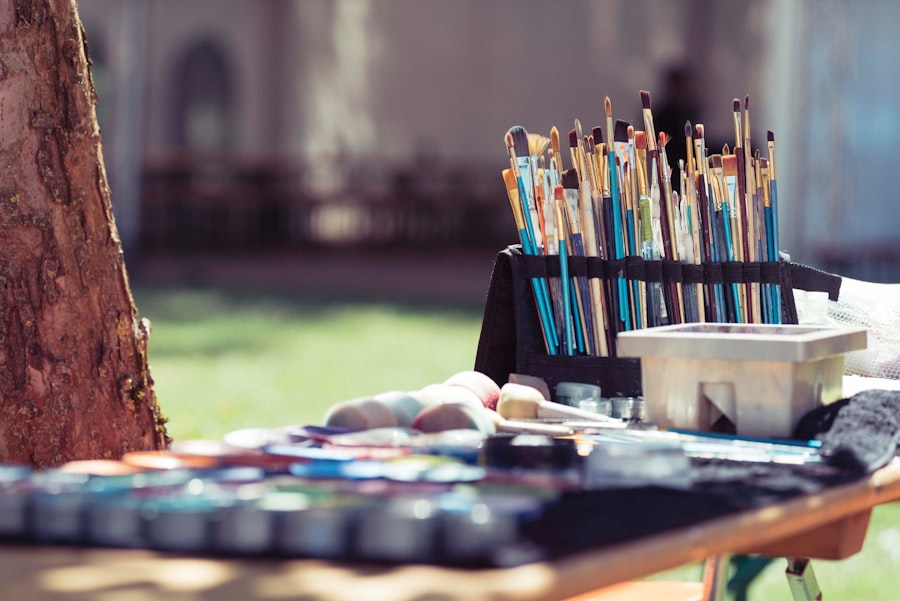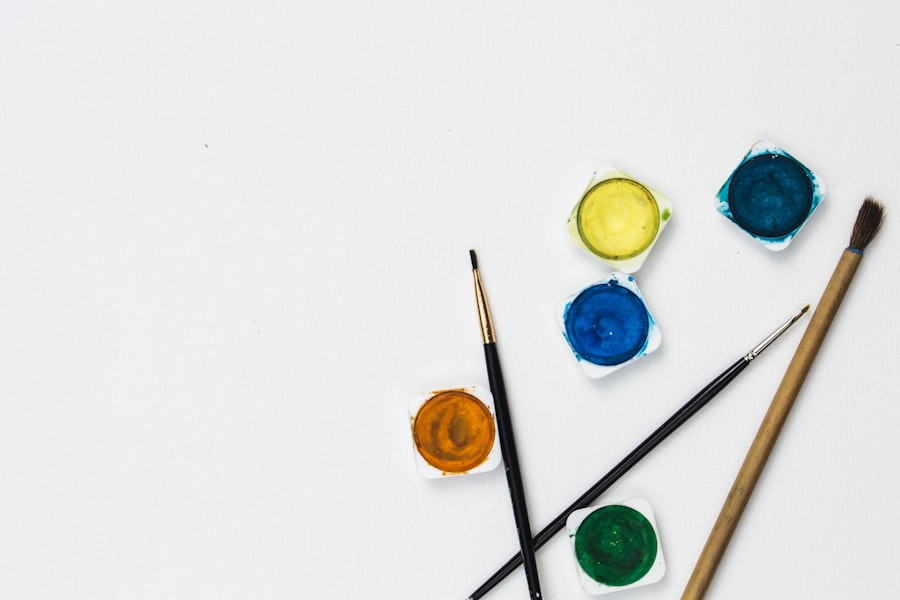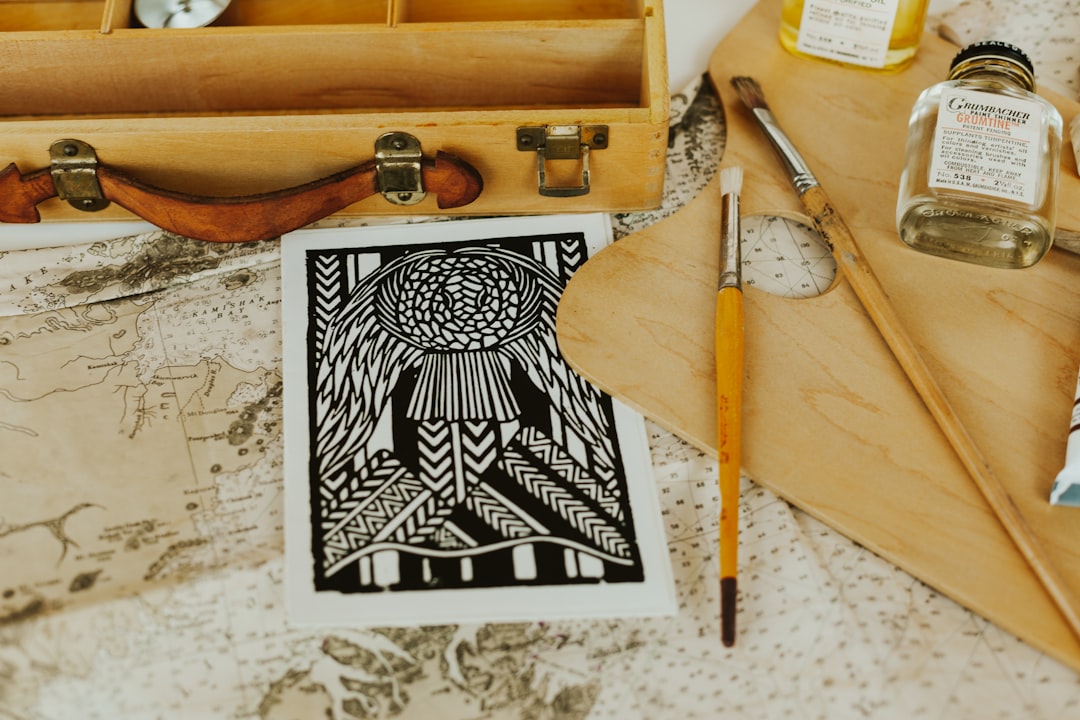Drawing prompts are specific ideas or themes designed to inspire artists and encourage them to create. These prompts can take various forms, ranging from simple phrases to complex scenarios, and they serve as a catalyst for artistic expression. The essence of a drawing prompt lies in its ability to provide a starting point, helping artists overcome the often-daunting blank canvas syndrome.
By offering a direction or a concept, drawing prompts can help individuals tap into their creativity and explore new artistic avenues. The use of drawing prompts is not limited to professional artists; they are equally beneficial for beginners and hobbyists. For those who may feel intimidated by the prospect of creating art, prompts can serve as a gentle nudge, guiding them toward their first strokes.
They can also be used in educational settings, where teachers employ prompts to stimulate students’ imaginations and enhance their drawing skills. In essence, drawing prompts are versatile tools that can be adapted to suit various skill levels and artistic goals.
Key Takeaways
- Drawing prompts are simple, open-ended suggestions or ideas that inspire artists to create new artwork.
- Drawing prompts can help spark creativity by providing a starting point or direction for artistic expression.
- Different types of drawing prompts include word prompts, image prompts, and concept prompts.
- Tips for using drawing prompts effectively include setting a time limit, experimenting with different mediums, and embracing mistakes.
- Examples of drawing prompts can range from “draw your favorite animal” to “illustrate a dream you had last night.”
How Drawing Prompts Can Spark Creativity
Drawing prompts have the unique ability to ignite the creative spark within individuals by providing a framework that encourages exploration. When faced with a prompt, artists are often compelled to think outside the box, leading them to experiment with different styles, techniques, and subjects. This process of exploration can result in unexpected outcomes, allowing artists to discover new facets of their creativity that they may not have encountered otherwise.
For instance, a prompt that asks an artist to depict a “dream world” might lead them to combine elements from their own dreams with fantastical imagery, resulting in a piece that is both personal and imaginative. Moreover, drawing prompts can help break through creative blocks that many artists experience at some point in their journey. When the mind feels stagnant or uninspired, a prompt can serve as a lifeline, providing a clear direction to follow.
This can be particularly beneficial for artists who may feel overwhelmed by the vast possibilities of what to create. By narrowing down the focus to a specific idea or theme, drawing prompts can help streamline the creative process and make it more manageable. As a result, artists may find themselves producing work that is not only more prolific but also more varied and innovative.
Different Types of Drawing Prompts

Drawing prompts come in an array of types, each designed to elicit different responses from artists. One common type is thematic prompts, which focus on a particular subject or concept. For example, a prompt might ask artists to illustrate “the passage of time,” encouraging them to explore how this theme can be represented visually through various symbols or scenes.
Thematic prompts often allow for a wide range of interpretations, making them ideal for artists who enjoy exploring abstract ideas. Another popular category is character-based prompts, which challenge artists to create original characters based on specific traits or scenarios. A prompt might suggest designing a character who is “a time-traveling librarian,” prompting the artist to think about how this character would look, what they would wear, and how their environment would reflect their unique role.
Character-based prompts not only stimulate creativity but also encourage storytelling, as artists often develop backstories and narratives alongside their illustrations.
Tips for Using Drawing Prompts Effectively
| Tip | Description |
|---|---|
| 1 | Choose prompts that inspire creativity and imagination |
| 2 | Encourage experimentation and exploration with different mediums |
| 3 | Provide open-ended prompts to allow for personal interpretation |
| 4 | Offer prompts that challenge the artist’s skills and abilities |
| 5 | Allow for flexibility and adaptation of the prompts to suit individual styles |
To maximize the benefits of drawing prompts, artists can adopt several strategies that enhance their creative experience. First and foremost, it is essential to approach prompts with an open mind. Rather than feeling constrained by the prompt’s parameters, artists should view it as an opportunity for exploration and experimentation.
This mindset allows for greater freedom in interpretation and can lead to surprising and delightful results. Additionally, setting aside dedicated time for drawing based on prompts can significantly enhance productivity. By establishing a routine—whether it’s daily or weekly—artists can create a habit of engaging with their creativity regularly.
This consistency not only helps in developing skills but also fosters a deeper connection with the artistic process. Furthermore, sharing completed works with others—be it through social media platforms or local art groups—can provide valuable feedback and encouragement, further motivating artists to continue exploring new prompts.
Examples of Drawing Prompts
The world of drawing prompts is rich with possibilities, offering countless ideas for artists seeking inspiration. One example could be “draw your favorite childhood memory,” which invites artists to reflect on their past and translate those emotions into visual form. This prompt encourages personal storytelling and can lead to nostalgic and heartfelt artwork.
Another engaging prompt might be “create an alternate universe where animals rule the world.” This idea allows artists to delve into imaginative realms where they can explore themes of power dynamics and societal structures through anthropomorphized creatures. Such prompts not only challenge technical skills but also encourage critical thinking about broader concepts.
Benefits of Using Drawing Prompts

The advantages of incorporating drawing prompts into an artist’s practice are manifold. One significant benefit is the enhancement of creative thinking skills. By regularly engaging with prompts, artists learn to approach problems from different angles and develop innovative solutions in their work.
This practice can translate into other areas of life as well, fostering a more adaptable mindset. Additionally, drawing prompts can serve as a powerful tool for skill development. Artists often find themselves experimenting with new techniques or mediums when responding to prompts, which can lead to improved proficiency over time.
For instance, an artist who typically works in pencil might explore watercolor painting when prompted to illustrate “a vibrant garden.” This willingness to step outside one’s comfort zone can result in a more diverse portfolio and greater artistic versatility.
How to Create Your Own Drawing Prompts
Creating personalized drawing prompts can be an enriching experience that allows artists to tailor their creative challenges to their interests and goals. One effective method is to draw inspiration from everyday life—observations made during walks, conversations with friends, or even dreams can serve as excellent sources for prompts. For example, an artist might notice an interesting juxtaposition between nature and urban life and create a prompt like “illustrate a city overtaken by nature.” Another approach is to combine different elements or themes into a single prompt.
For instance, an artist could merge two seemingly unrelated concepts—such as “space exploration” and “underwater life”—to create a unique challenge that encourages imaginative thinking. This blending of ideas not only fosters creativity but also pushes artists to think critically about how disparate elements can coexist within a single piece.
Embracing Creativity with Drawing Prompts
Drawing prompts are invaluable tools that can significantly enhance an artist’s creative journey. By providing direction and inspiration, they help individuals overcome barriers to creativity while encouraging exploration and experimentation. Whether through thematic challenges or character-based scenarios, drawing prompts offer endless opportunities for artistic growth and self-expression.
As artists embrace these prompts, they not only develop their technical skills but also cultivate a deeper understanding of their own creative processes. The act of responding to prompts fosters resilience in the face of creative blocks and nurtures an ongoing dialogue between the artist and their work. Ultimately, drawing prompts serve as gateways to new worlds of imagination, inviting artists to embark on journeys that enrich both their art and their lives.















